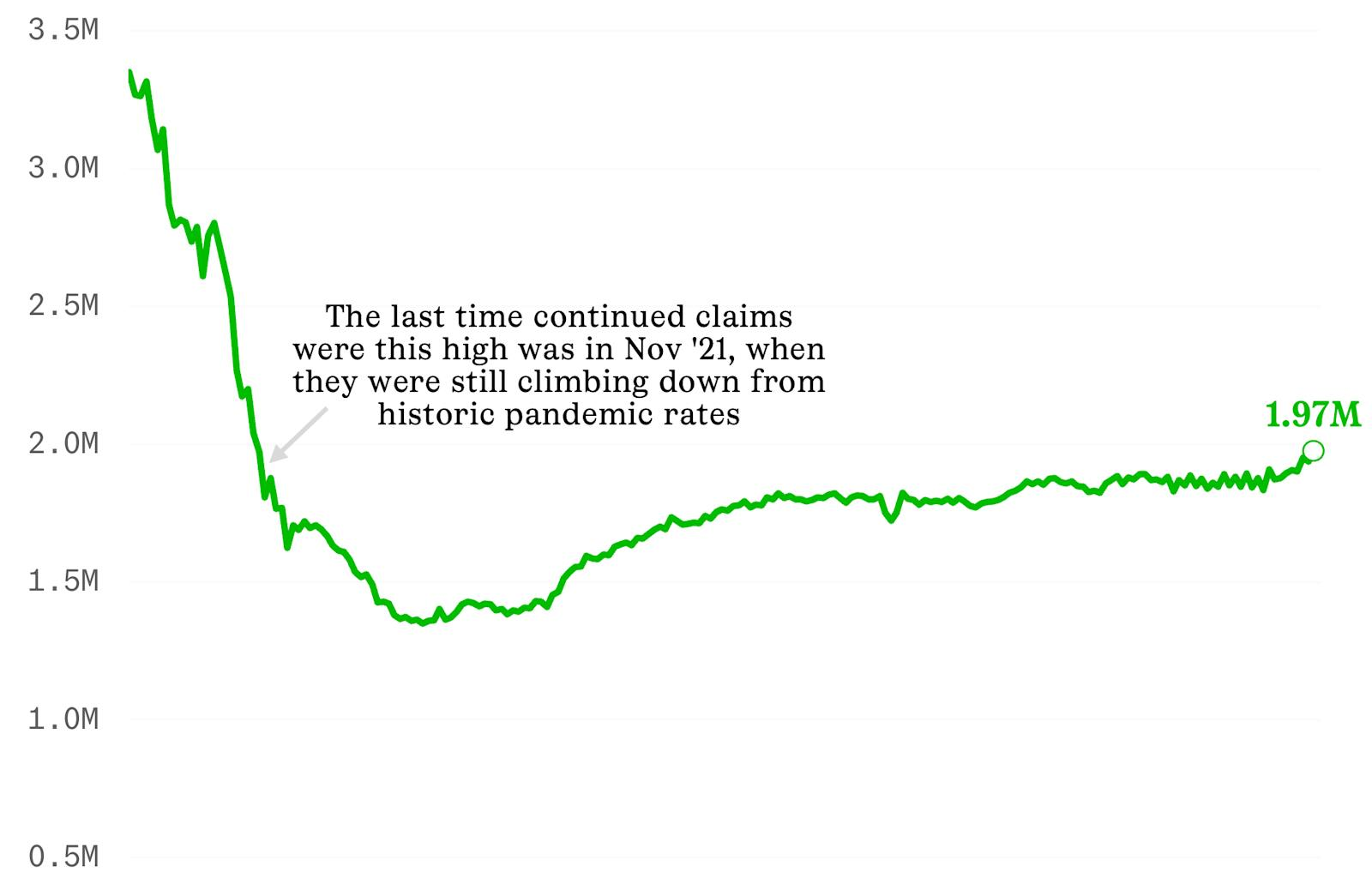America’s job market is in a “hire less, fire less” mode — and even that “fire less” might not last.
According to the US Labor Department, continuing jobless claims — the number of people still collecting unemployment benefits after their first claim — rose to 1.97 million for the week ending June 14, their highest level in more than 3.5 years. Meanwhile, initial jobless claims (a proxy for new layoffs) remained stable.
Taken together, these trends point to a cooling job market: workers aren’t being laid off en masse, but when they are, it’s taking longer to land new roles.
Sherwood News
Indeed, job seekers are already feeling the squeeze. Per the latest Conference Board survey, the share of consumers viewing jobs as “plentiful” just fell to a four-year low, and it’s not just a hunch, either. A June report from Indeed Hiring Lab shows that monthly job gains in the US have consistently lagged behind the 2019 average for the past three months. Now, only 52% of sectors are hiring above prepandemic levels, down from ~75% in early 2024.
At the same time, employers are holding on to existing staff, reflecting a kind of labor market freeze rooted in caution rather than confidence. In fact, consumer spending dipped for a second month in May, with retail sales posting their sharpest monthly drop in two years. That’s not a great sign for future hiring.
Still, Fed Chair Jerome Powell said last week that the labor market remains “solid” with conditions “at or near maximum employment.” But as businesses face growing cost pressures from ever-looming tariffs, they may soon be forced to cut headcount, Richmond Fed President Tom Barkin warned, declaring that “the current low hiring, low firing environment might come under threat.”
